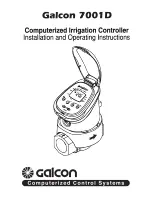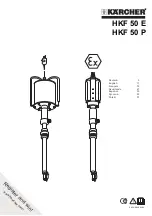
TIP845 User Manual Issue 1.4
Page 24 of 32
6.2.1 Sequencer
Errors
If the sequencer detects an error, it will stop after the last instruction and sets the corresponding error
flag in the Sequencer Status Register SEQSTAT.
Error
Description
Sequencer Action
User Action
Data Overflow
Error
Error occurs if the
sequencer has new
data to store but the
user has not yet
acknowledged that the
data from the previous
sequence has been
read out.
(Sequencer Timer Mode
only)
Sequencer stops after the
last instruction is done.
Data Overflow Error Flag is
set.
If it is enabled, an interrupt
request will be asserted.
Write a ‘1’ to the Sequencer
Status Register bit 1.
Make sure the Sequencer
Data is read and
acknowledged within the
programmed sequence
time.
Start sequencer again.
Timer Error
Error occurs if the
programmed sequencer
time is shorter than the
sequence itself.
(Sequencer Timer Mode
only)
Sequencer stops after the
last instruction is done.
Timer Error Flag is set.
If it is enabled, an interrupt
request will be asserted.
Write a ‘1’ to the Sequencer
Status Register bit 2.
Program a longer sequence
time.
Start sequencer again.
Instruction
RAM Error
Error occurs if no
channel is enabled for
the sequence (bit 1 or
bit 4 of sequencer
Instruction RAM word)
and the sequencer is
started.
Sequencer stops after the
last instruction is done.
Instruction RAM Error Flag
is set.
If it is enabled, an interrupt
request will be asserted.
Write a ‘1’ to the Sequencer
Status Register bit 3.
Correct the Sequencer
Instruction RAM setting.
Start sequencer again.
Figure 6-1 : Sequencer Errors
If the Sequence Timer Register is set to 0x0000 (Sequencer Continuous Mode) the sequencer
ignores the data overflow. The Data Overflow Error Flag is always read as ‘0’ in this mode.









































